10 Powerful Indian Trees: Nature’s Oxygen Factories Revealed
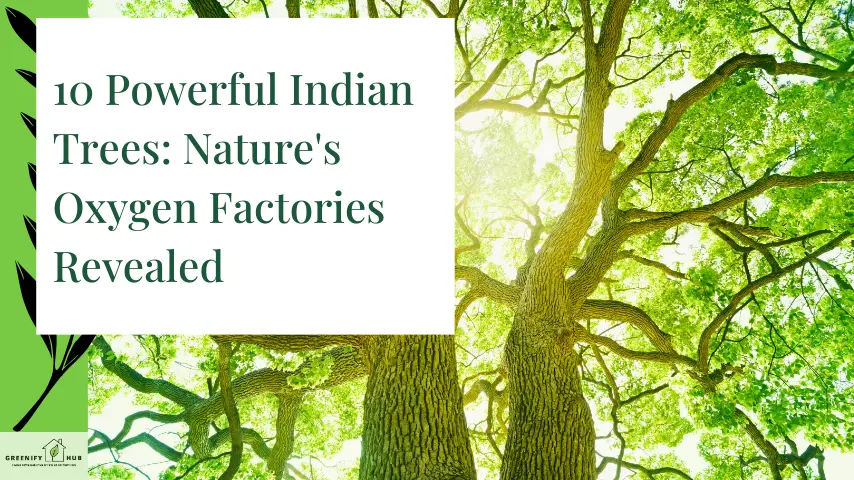
India’s diverse flora is a treasure trove of natural air purifiers. Our trees are not just silent sentinels; they’re the unsung heroes in our battle against pollution.
Did you know that a single mature tree can produce enough oxygen for two people annually? That’s like having a personal air factory in your backyard!
Indian trees are among the greatest sources of oxygen globally. They’re nature’s way of saying, “Breathe easy, I’ve got your back!”
But it’s not just about oxygen. These leafy giants are multitaskers:
Air Quality Champions
Trees act like giant air filters. They trap dust, absorb harmful gases, and release fresh oxygen. It’s like having a city-wide air purifier working 24/7!
Urban Air Pollution Fighters
In crowded cities, trees are our first line of defense against smog and pollutants. They’re the green warriors in our concrete jungles.
Sustainable Level Maintainers
Trees help maintain a sustainable level of oxygen in our atmosphere. They’re the earth’s natural life support system.
Climate Change Mitigators
By absorbing carbon dioxide, trees play a crucial role in combating climate change. They’re nature’s way of hitting the ‘undo’ button on global warming.
The impact of Indian trees on our environment is profound. From the banyan’s sprawling canopy to the neem’s medicinal leaves, each species contributes uniquely to our ecosystem.
Remember, when you see a tree, you’re looking at a living, breathing air purification system. It’s not just greenery; it’s life itself.
Indian trees are powerful oxygen producers and environmental guardians, playing a crucial role in maintaining air quality, combating pollution, and supporting sustainable ecosystems.
Top 10 Oxygen-Producing Indian Trees
Let’s embark on a green journey through India’s top oxygen-producing trees. These leafy giants are not just beautiful; they’re our natural air conditioners!
1. Banyan Tree: The Oxygen Giant
The banyan, India’s national tree, is a true oxygen powerhouse. With its massive canopy and countless aerial roots, it’s like a forest within a single tree!
Did you know a mature banyan can cover several acres? That’s a lot of oxygen-producing leaves!
Tree lovers often sit under its shade, enjoying the cool, oxygen-rich air. It’s nature’s own relaxation spot.
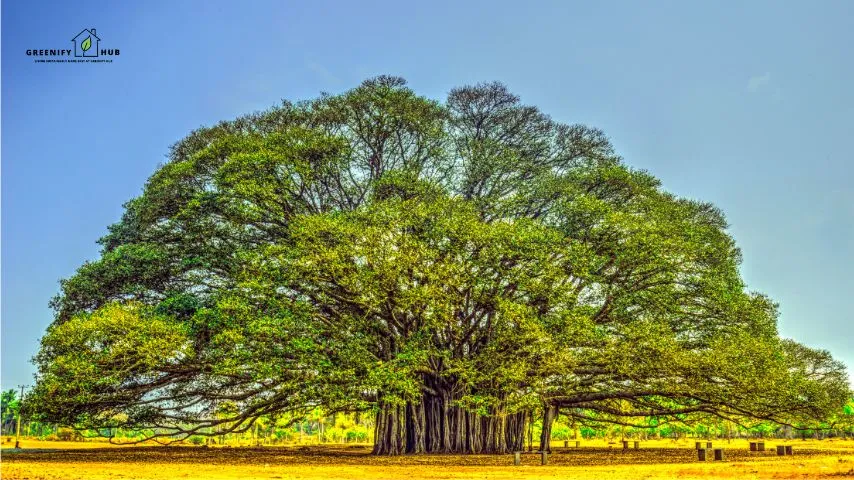
2. Neem Tree: Nature’s Air Purifier
Neem is not just any tree; it’s a pharmacy and air purifier rolled into one! Its leaves are used in traditional medicine and are excellent at purifying air.
Neem can thrive in harsh conditions, making it a perfect adaptable indoor plant. It’s like having a natural air freshener in your living room!

3. Peepal Tree: Sacred Oxygen Factory
The peepal is considered sacred in India, and for good reason! It’s one of the few trees that produce oxygen 24/7.
Planting a peepal is believed to bring good luck. Well, with all that extra oxygen, you’re definitely in for some fresh fortune!

4. Arjuna Tree: Heart-Healthy Oxygen Producer
The Arjuna tree is not just an oxygen producer; it’s also one of the most valuable medicinal plants in India. Its bark is used in heart treatments.
This Indian native is like a natural health clinic. Breathe in its oxygen, and you might just feel your heart thank you!
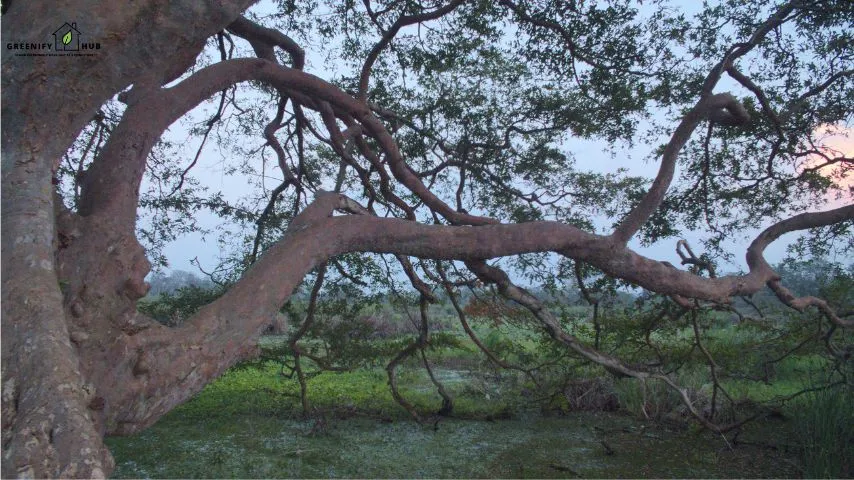
5. Ashoka Tree: Sorrow-Free Air Cleaner
The Ashoka tree is a beautiful thing to behold and a powerful air purifier. Its dense canopy is perfect for modern urban landscapes.
Legend has it that the Ashoka can take away sorrows. Well, with all that clean air, who wouldn’t feel happier?
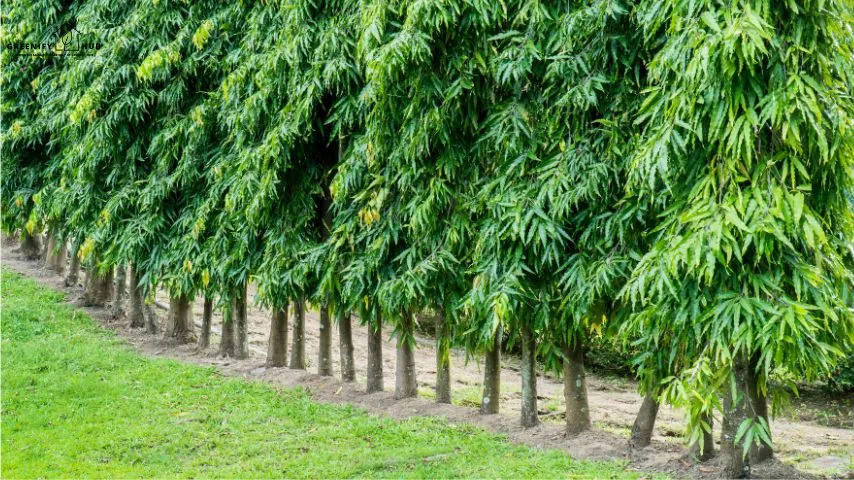
6. Indian Bael: Medicinal Oxygen Powerhouse
Indian Bael is often called a magical plant due to its medicinal properties and oxygen-producing capacity.
It’s a favorite in agricultural research for its resilience and air-purifying abilities. Talk about a tree with a PhD in environmental science!
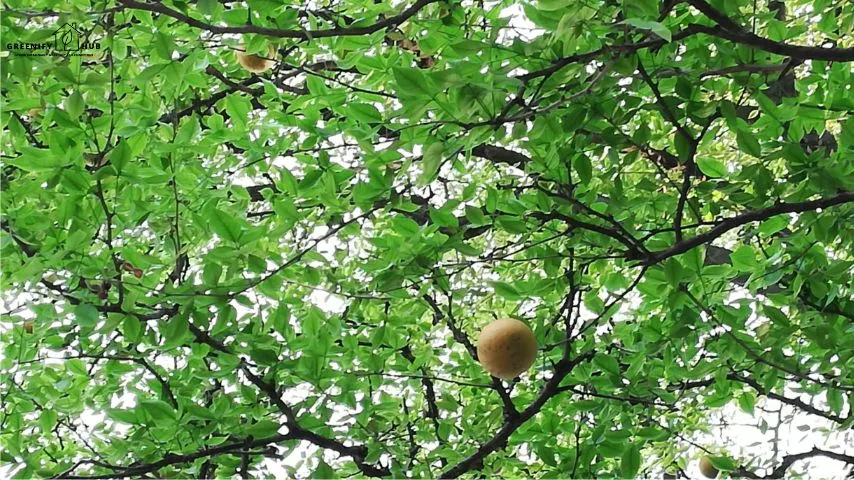
7. Curry Tree: Aromatic Air Enhancer
The curry tree is not just for flavoring your food; it’s a great indoor plant too! It loves sunlight and gives back fresh, aromatic air.
Imagine having a tree that makes your house smell like a delicious curry and cleans your air. That’s the curry tree for you!

8. Saptaparni Tree: Seven-Leaved Wonder
The Saptaparni, with its seven-leaf clusters, is a champion at cleaning city air. It’s like having seven air purifiers in one!
Plant one near your place of residence, and you’ll be breathing easier in no time.

9. Jamun Tree: Sweet Breath of Fresh Air
The Jamun tree is not just about its delicious fruits; it’s also a plenty good oxygen producer. There’s a good reason why it’s found in many Indian gardens!
It’s like nature’s two-in-one deal: fresh air and fresh fruit!
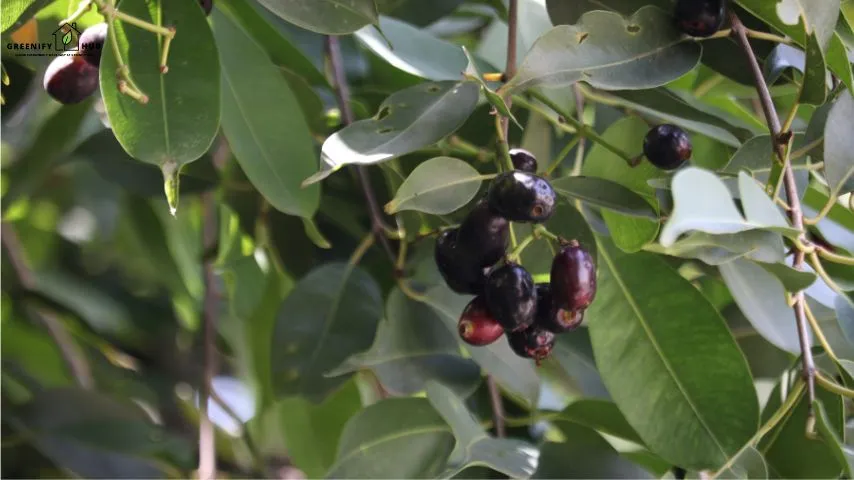
10. Bamboo: The Versatile Oxygen Generator
Bamboo might tell a different story than traditional trees, but it’s a superstar oxygen producer. It grows fast and produces 35% more oxygen than other trees.
A bamboo grove is like nature’s oxygen factory working overtime!
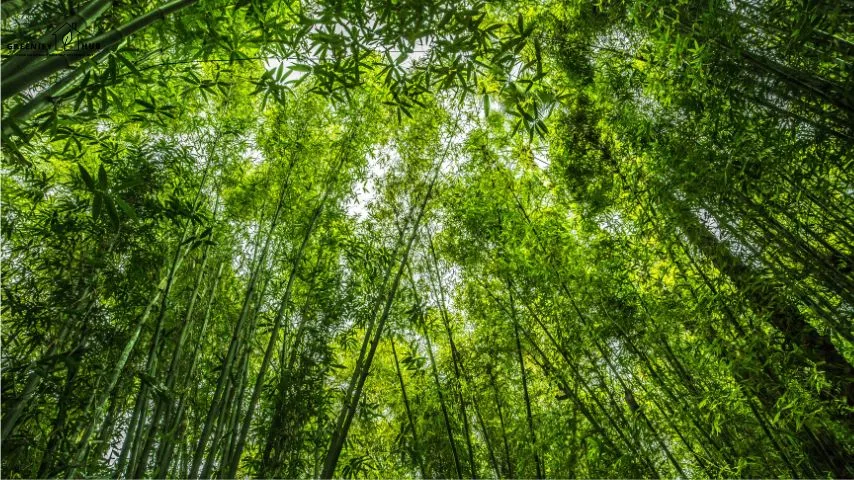
RELATED: Explore the Limitless Creativity of Bamboo: 1000 Things to Make from Bamboo
India’s top 10 oxygen-producing trees offer a diverse range of benefits, from air purification and medicinal properties to cultural significance, making them invaluable assets in both urban and rural environments.
The Science Behind Trees and Oxygen Production
Ever wondered how trees turn bad air into good? It’s not magic, it’s science – and it’s pretty cool!
The Oxygen Factory Inside Leaves
Imagine each leaf as a tiny factory. It takes in carbon dioxide (the stuff we breathe out) and sunlight, and through a process called photosynthesis, it produces oxygen (the stuff we need to breathe in).
It’s like trees are running a recycling plant for air!
Volatile Organic Compounds: Nature’s Air Fresheners
Trees don’t just produce oxygen; they also release volatile organic compounds. Don’t let the name scare you – these are natural air fresheners!
Ever noticed that fresh forest smell? That’s VOCs at work!
Nitrogen Fixation: The Underground Work
Some trees, like the Indian Alder, can fix nitrogen from the air into the soil. It’s like they’re fertilizing the ground while cleaning the air above!
The Carbon Dioxide Vacuum
Trees are nature’s vacuum cleaners for carbon dioxide. A single mature tree can absorb up to 48 pounds of CO2 per year!
That’s like offsetting the emissions from your car for a whole day, every single day.
Oxygen Production by Numbers
On average, one acre of trees produces enough oxygen for 18 people to breathe for a year. Now that’s what we call a breath of fresh air!
Trees are natural air purification systems, utilizing complex processes like photosynthesis and VOC production to convert carbon dioxide into oxygen, while also improving soil quality through nitrogen fixation.
Urban Trees: Combating Air Pollution in Cities
In our concrete jungles, trees are the green superheroes we desperately need. They’re not just pretty to look at; they’re actively fighting pollution!
The David Nowak Effect
Dr. David Nowak, a renowned scientist, found that urban trees remove about 711,000 tons of air pollution annually in the US alone. Imagine what our Indian trees are doing for our bustling cities!
Particulate Matter: The Invisible Enemy
Trees are excellent at trapping particulate matter – those tiny, harmful particles floating in city air. Their leaves act like natural air filters.
It’s like having millions of tiny air purifiers scattered throughout the city!
The Oxygen Oasis Effect
In urban areas, a cluster of trees can create a microclimate of cleaner, cooler air. It’s like finding a little oasis in the middle of a hot, polluted desert.
Recent Studies: Trees to the Rescue
A recent study showed that increasing urban tree cover by just 5% can reduce daytime temperatures by 3.6°F. That’s like turning down the city’s thermostat!
So, next time you see a tree in your city, give it a silent thank you. It’s working hard to make your urban life a bit more breathable!
Urban trees play a crucial role in combating air pollution in cities by filtering particulate matter, creating cleaner microclimates, and significantly reducing urban temperatures, as supported by scientific research.
Indoor Plants for Better Air Quality
Who says you need a garden to enjoy fresh air? Bring the forest inside with these oxygen-producing indoor plants!
The NASA-Approved Air Purifiers
NASA’s Clean Air Study found that certain indoor plants can remove up to 87% of air toxins in 24 hours. Talk about home improvement!
Popular Indoor Oxygen Plants
1. Snake Plant: The bedroom buddy that produces oxygen at night.
2. Peace Lily: A beautiful air cleaner that loves the shade.
3. Spider Plant: The air-purifying champion that’s almost impossible to kill.
4. Weeping Fig: A stylish tree that’s perfect for living rooms.
Money Plant: The Lucky Air Cleaner
The money plant isn’t just about attracting wealth; it’s great at cleaning indoor air too. It’s like having a lucky charm and an air purifier in one!
Aloe Vera: The Multipurpose Marvel
Aloe vera isn’t just for sunburns; it’s an excellent air purifier too. It’s particularly good at removing formaldehyde from the air.
Imagine having a plant that can soothe your skin and clean your air. That’s aloe vera for you!
Top 5 Indoor Plants for Oxygen Production
1. Snake Plant: This night owl produces oxygen while you sleep. It’s like having a personal oxygen bar in your bedroom!
2. Peace Lily: Not just a pretty face, this plant is a powerhouse air purifier. It’s perfect for those dark corners in your home.
3. Spider Plant: This hardy plant is great for beginners. It multiplies quickly, so you can spread the clean air love throughout your home.
4. Weeping Fig: This small tree is a natural humidifier and air purifier. It’s like having a mini forest in your living room!
5. Bamboo Palm: This tropical beauty is excellent at removing indoor air pollutants. Plus, it adds a vacation vibe to any room!
Remember, these plants aren’t just decorations; they’re working hard to keep your indoor air fresh and clean. It’s like having a team of tiny, green air purifiers scattered around your home!
Indoor plants, such as snake plants, peace lilies, and money plants, serve as natural air purifiers, significantly improving indoor air quality by removing toxins and producing oxygen, making them essential additions to any home or office environment.
The Role of Trees in Sustainable Urban Development
Trees aren’t just pretty faces in our cities; they’re key players in creating sustainable, livable urban spaces. Let’s see how these green giants are shaping our cities!
Nature’s Air Conditioners
Trees provide natural cooling through shade and transpiration. It’s like having a city-wide air conditioning system that doesn’t need electricity!
Sustainable Dam Against Urban Heat Islands
Urban areas are often hotter than surrounding rural areas due to the “heat island” effect. Trees act as a sustainable dam against this heat, cooling our concrete jungles.
Rainfed Water Use Efficiency
Trees improve soil water retention, reducing the need for artificial watering. It’s nature’s way of saying, “I’ve got this covered!”
Network Design for Green Cities
Urban planners are now integrating trees into city network designs. It’s like creating a green nervous system for our cities!
Economic Benefits
Did you know that trees can increase property values? A tree-lined street isn’t just beautiful; it’s valuable!
Trees in cities aren’t just decorations; they’re hard-working members of our urban communities. They’re the silent partners in our quest for sustainable, livable cities.
Trees play a crucial role in sustainable urban development by providing natural cooling, combating heat islands, improving water efficiency, and contributing to strategic urban planning, ultimately enhancing the livability and economic value of cities.
Tree Planting Initiatives: Making a Difference
Ever thought about how a simple act of planting a tree can change the world? Let’s dive into some inspiring tree planting initiatives that are making waves!
The Power of Tree Talk
Tree talk isn’t just about discussing trees; it’s about action. Communities around India are coming together to green their neighborhoods.
Personal Stories of Change
Take Mallika Ravikumar, for instance. She started a community garden in her apartment complex. Now, it’s a green oasis in the middle of the city!
From Little Acorns…
Remember, every forest begins with a single seed. Your one tree can inspire a whole community to go green!
Urban Jungles Rising
Cities like Bangalore are leading the charge with massive tree-planting drives. It’s like watching concrete jungles transform into actual jungles!
Schools Getting Their Hands Dirty
Many schools now have tree-planting programs. Kids are learning that they can make a difference, one sapling at a time.
These initiatives aren’t just about planting trees; they’re about planting hope for a greener future. So, ready to get your hands dirty and make a difference?
Tree planting initiatives, ranging from community gardens to city-wide programs, are making significant impacts on urban environments, demonstrating how individual and collective efforts can lead to meaningful environmental change.
The Future of Urban Forests: Challenges and Opportunities
As we look ahead, our urban forests face both hurdles and exciting possibilities. Let’s explore what the future holds for our city trees!
The Clean Air Challenge
Ensuring a sufficient quantity of clean air in growing cities is a major challenge. But it’s also an opportunity for innovative green solutions!
High-Tech Trees
Imagine trees equipped with sensors to monitor air quality. It’s not science fiction; it’s the future of urban forestry!
Community Involvement: A Great Help
The future of urban forests relies heavily on community participation. Your involvement can be a great help in shaping greener cities!
Balancing Development and Nature
As cities expand, finding space for trees becomes tricky. But creative solutions like vertical forests and rooftop gardens are rising to the challenge!
Climate-Resilient Tree Species
With changing climates, we need to plant trees that can withstand new conditions. It’s like future-proofing our urban forests!
The future of urban forests is in our hands. With the right approach, our cities can be concrete jungles and green paradises at the same time!
The future of urban forests presents challenges in air quality and space constraints, but also offers opportunities for innovative solutions, community involvement, and the development of climate-resilient green spaces in cities.
Conservation Efforts for Indian Trees
India’s trees are not just part of our landscape; they’re part of our heritage. Let’s look at how we’re working to protect these green treasures!
The Sacred Grove Movement
Many communities in India protect sacred groves – patches of forest considered holy. It’s like having nature reserves blessed by tradition!
Government Initiatives
The Indian government has a list of tree species under protection. It’s like having a VIP list for trees!
NGOs: The Green Warriors
Organizations like the Tree Protection Network are doing great work. They’re like the guardians of our leafy friends!
Urban Tree Preservation
Cities are getting creative with tree preservation. In Mumbai, they even relocated full-grown trees to make way for a metro line!
Awareness Campaigns
Campaigns like Van Mahotsav are spreading the word about tree conservation. It’s like throwing a party for trees, and everyone’s invited!
Nishanth Srinivasan’s Approach
Environmentalists like Nishanth Srinivasan are developing new strategies for tree conservation. It’s like having a chess grandmaster plan moves for our forests!
Conservation isn’t just about protecting trees; it’s about preserving our future. Every tree saved is a victory for our planet!
Conservation efforts for Indian trees encompass a wide range of initiatives, from traditional sacred groves to modern government policies and NGO activities, all aimed at preserving India’s rich arboreal heritage for future generations.
RELATED: Understanding Eco Friendly and Environmentally Friendly
Conclusion
As we conclude our journey through India’s oxygen-rich trees, we hope you’ve gained a deeper appreciation for these natural wonders. These ten powerful species not only purify our air but also offer numerous health and environmental benefits. From the majestic Banyan to the versatile Bamboo, each tree plays a crucial role in combating urban air pollution and maintaining ecological balance.
By incorporating these trees into our urban landscapes and even as indoor plants, we can significantly improve air quality and create healthier living spaces. Remember, every tree planted is a step towards a greener, more sustainable future. Whether you’re a tree lover or simply concerned about the environment, your efforts in planting and preserving these oxygen factories can make a real difference.
Let’s embrace the power of nature and work together to create a world where clean air is abundant, and our cities thrive alongside these magnificent trees. Your actions today can shape a healthier tomorrow for generations to come.





